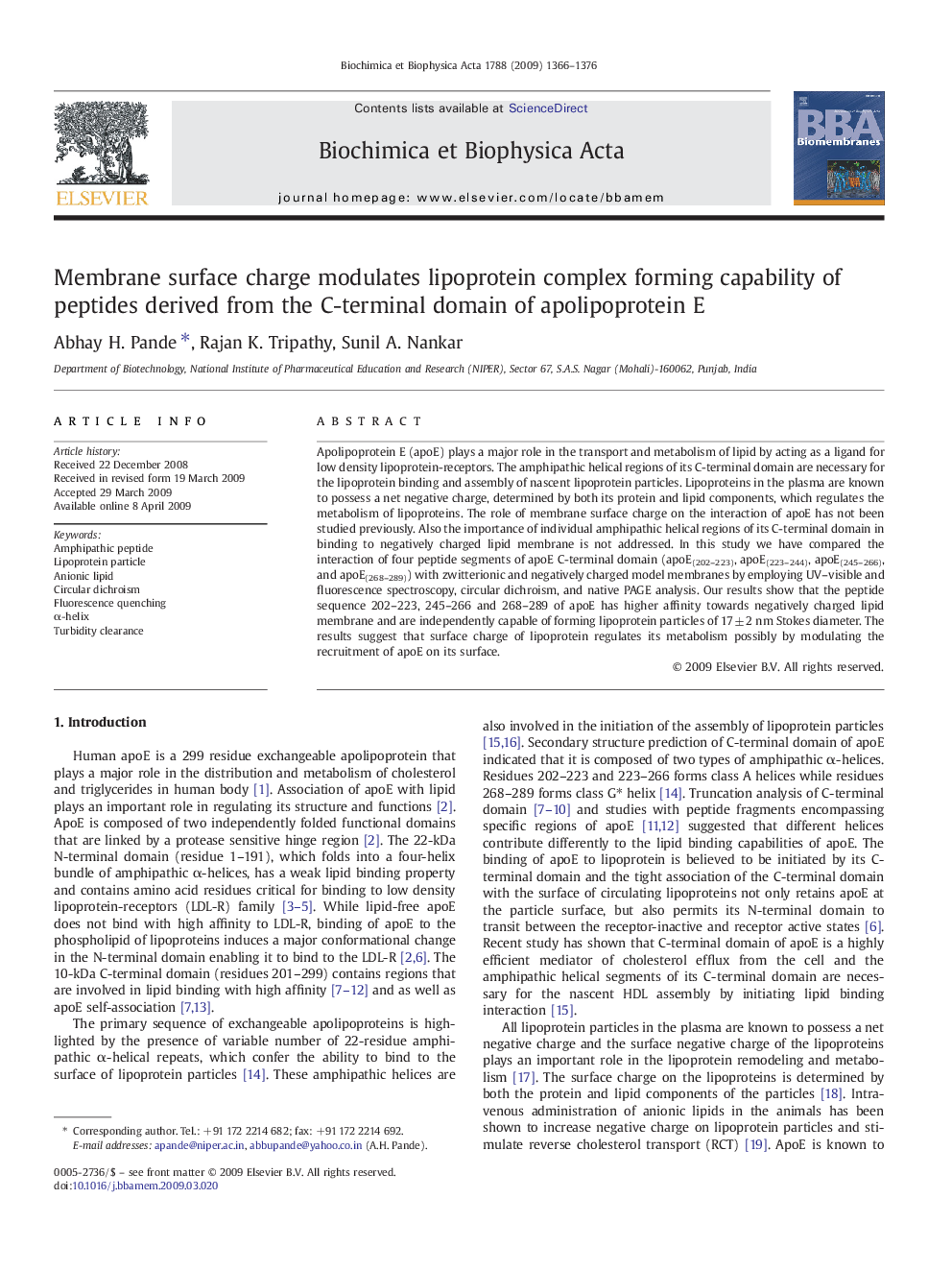| Article ID | Journal | Published Year | Pages | File Type |
|---|---|---|---|---|
| 1945155 | Biochimica et Biophysica Acta (BBA) - Biomembranes | 2009 | 11 Pages |
Apolipoprotein E (apoE) plays a major role in the transport and metabolism of lipid by acting as a ligand for low density lipoprotein-receptors. The amphipathic helical regions of its C-terminal domain are necessary for the lipoprotein binding and assembly of nascent lipoprotein particles. Lipoproteins in the plasma are known to possess a net negative charge, determined by both its protein and lipid components, which regulates the metabolism of lipoproteins. The role of membrane surface charge on the interaction of apoE has not been studied previously. Also the importance of individual amphipathic helical regions of its C-terminal domain in binding to negatively charged lipid membrane is not addressed. In this study we have compared the interaction of four peptide segments of apoE C-terminal domain (apoE(202–223), apoE(223–244), apoE(245–266), and apoE(268–289)) with zwitterionic and negatively charged model membranes by employing UV–visible and fluorescence spectroscopy, circular dichroism, and native PAGE analysis. Our results show that the peptide sequence 202–223, 245–266 and 268–289 of apoE has higher affinity towards negatively charged lipid membrane and are independently capable of forming lipoprotein particles of 17 ± 2 nm Stokes diameter. The results suggest that surface charge of lipoprotein regulates its metabolism possibly by modulating the recruitment of apoE on its surface.
